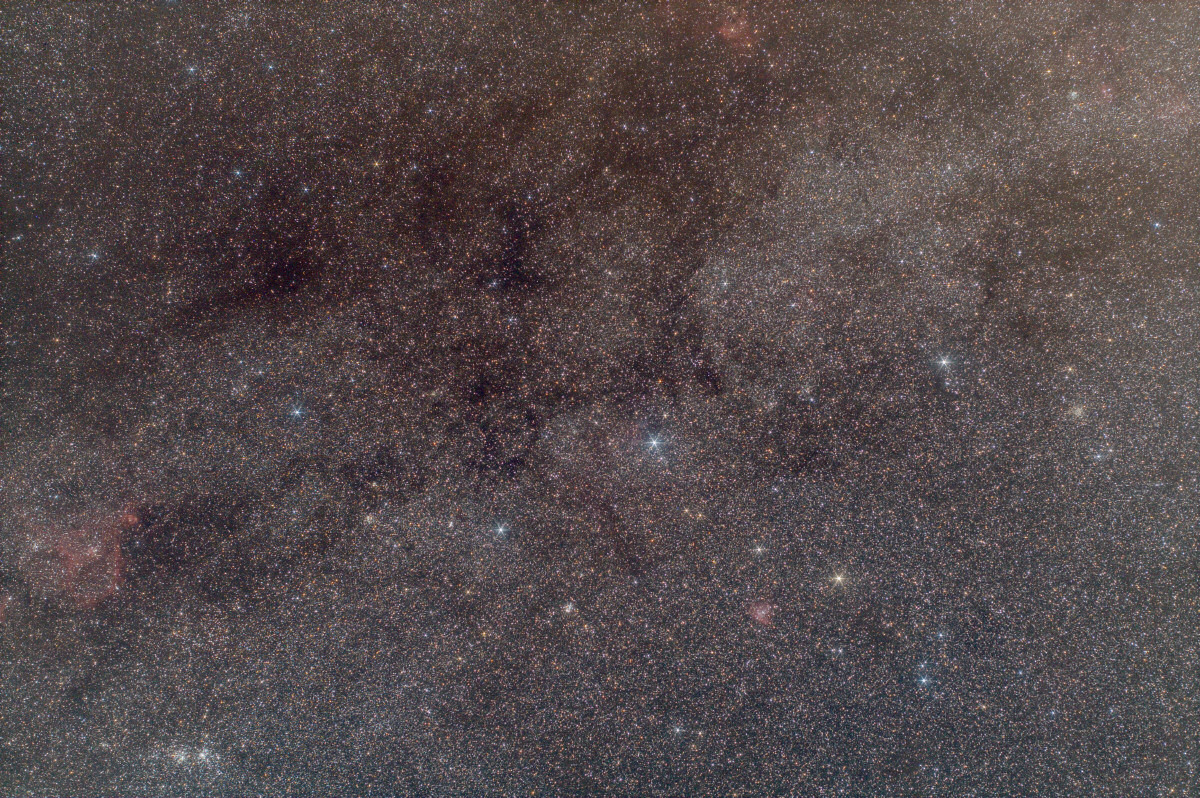
Move your mouse over the image above (or touch it) to get a version with constellation lines, deep-sky objects and labels drawn.
This photograph shows mainly the constellation Cassiopeia, but also includes small parts of Perseus und Cepheus. Cassiopeia is a large autumn constellation which includes the northernmost part of the Milky Way, making it rich in mostly galactic deep-sky objects. It culminates in early October but is visible for observers in mid-northern latitudes for most of the year due to it's high declination of about +60 degrees. Cassiopeia's five brightest stars form a flattened "W" shape, making it one of the most distinctive and best known constellations in the sky.
The main attraction in this aera are galactic clusters, most prominent is the Double Cluster NGC 884/869 in Perseus, near the lower left corner, NGC 7789 not far from the right edge, and M52 near the upper right corner. Another well-known galactic clusters are found within the photograph are NGC 457, the bright "Owl" or "Airplane" Cluster surrounding Phi Cassiopeiae.
Yet another attraction of Cassiopeia are galactic nebulae. The brightest of these is NGC 281, sometimes called the "Pacman Nebula" by astrophotographers, visible east of the constellation's brightest star, α Cassiopeiae, towards the lower edge of the photograph. Two larger but fainter examples are IC 1805, the Running Dog Nebula, near the left edge and NGC 7822 just at the upper edge.
 Milky Way Vista - Cygnus to Cassiopeia, zoom lens photograph.
Milky Way Vista - Cygnus to Cassiopeia, zoom lens photograph.
 Milky Way Vista - Perseus to Cassiopeia, zoom lens photograph.
Milky Way Vista - Perseus to Cassiopeia, zoom lens photograph.
 Cassiopeia, telelens photograph.
Cassiopeia, telelens photograph.
 NGC 884/869 - The Double Cluster, Wright-Newtonian photograph.
NGC 884/869 - The Double Cluster, Wright-Newtonian photograph.
 IC 1805 - Heart Nebula, CMOS image.
IC 1805 - Heart Nebula, CMOS image.
Exposure Data